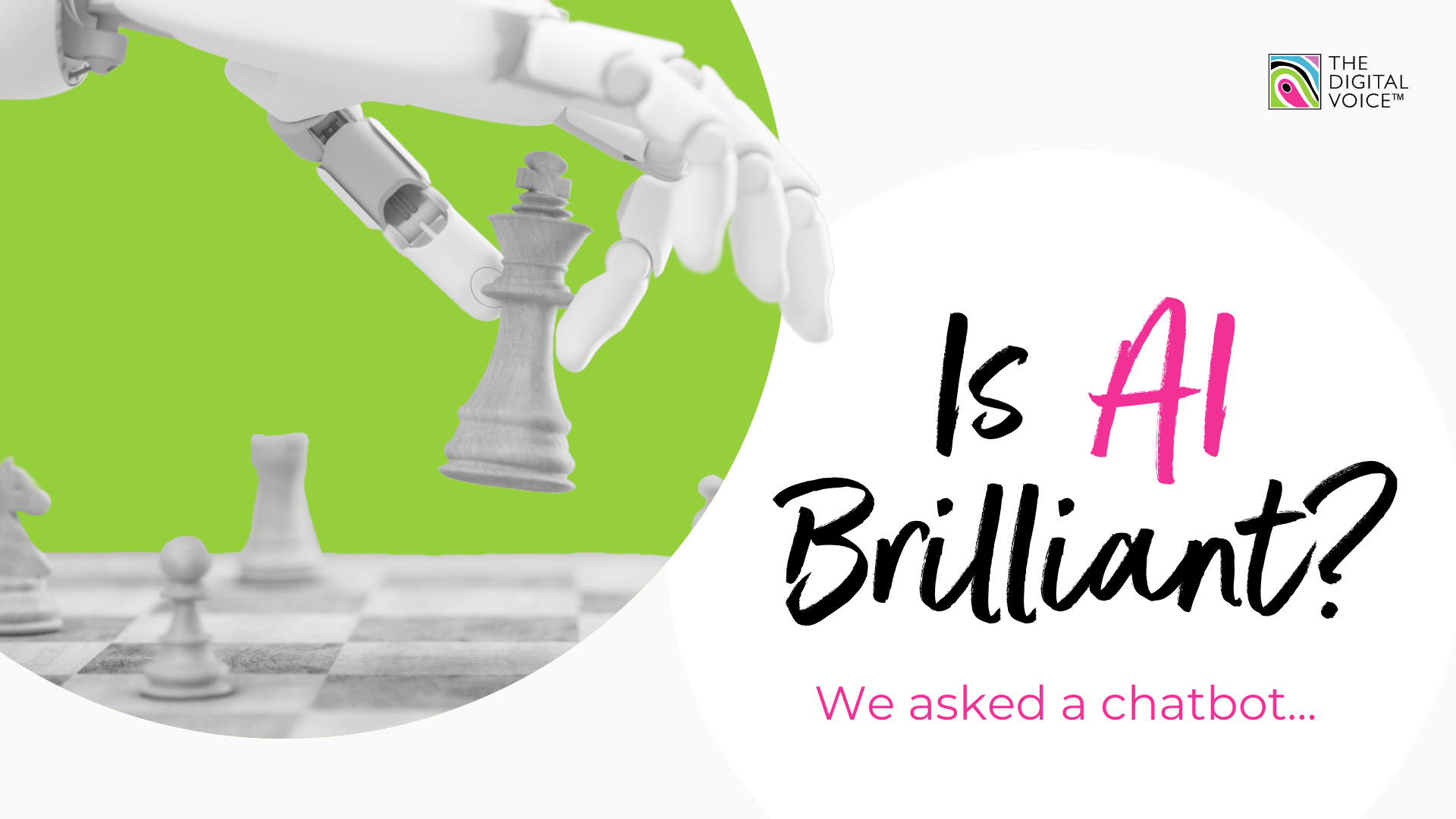Is AI brilliant?
We asked a chatbot…

It is sobering to consider that the concept of artificial intelligence - that 2020s embodiment of thrilling technological progress or existential dread, depending on your outlook - is actually older than rock & roll. But unlike rock & roll, AI’s peak years unmistakably lie ahead.
The history of artificial intelligence (AI) dates back to the 1950s, when computer scientists like Alan Turing and John McCarthy laid the foundations for AI as a formal academic discipline. Turing’s work on machine intelligence, including the famous Turing Test, and McCarthy's coining of the term "artificial intelligence" in 1956 at the Dartmouth Conference, marked AI's early conceptualisation.
Over the decades, AI experienced waves of progress and setbacks, from early rule-based systems to more advanced machine learning techniques. Key milestones include the development of expert systems in the 1970s, neural networks in the 1980s, and the rise of deep learning in the 2010s, culminating in AI applications like AlphaGo, self-driving cars, and large language models like GPT. Today, AI is central to industries ranging from healthcare to finance, with growing discussions about its ethical and societal impacts.
That’s ChatGPT’s short version of the official history of AI to date, proving that, while AI may get the facts straight, it doesn’t necessarily tell them in a way that makes them more interesting.
AI: what is it?
When we talk about AI, what we are describing is technology that enables computers and machines to simulate human processes, including learning, comprehension, problem-solving, decision-making, creativity and autonomy - to paraphrase IBM’s own definition. In other words, AI is human intelligence, exhibited by machines.
In today’s world, AI is now so deeply entrenched in so many processes, businesses and industries, we barely recognise it as AI anymore - given that it powers and enhances your smartphone, your Amazon Echo, your social feed, your online shopping recommendations and your email spell-checker, just for starters.
As a client of The Digital Voice once sagely observed, “AI these days basically means ‘uses computers’”. AI isn’t the future - it’s all around us right now, and the transformations it heralds are already taking place quietly behind the scenes, within technologies and platforms we have already welcomed into our lives.
AI in ad tech
In the ad world, AI makes a set of particular promises. ChatGPT sums them up, and hits most of the key notes: AI can help advertisers create more targeted, efficient and impactful campaigns by optimising budget allocation, enhancing personalisation, improving ad content and protecting against fraud. Instead of replacing human creativity, AI enhances it, allowing advertisers to focus on strategy and storytelling while AI handles data-driven optimisations.
Some degree of AI involvement nowadays is table stakes for publishers, advertisers and their many intermediaries, as advertisers attempt to improve returns through dynamic content creation, precise customer segmentation, dynamic budget allocation, interactive ads, automated fraud detection and prevention and numerous other practices. No ad tech company is without some degree of AI back-up, though all will stress that AI is worth relatively little without smart people to apply it.
Where is AI going next?
Lord only knows. In the name of progress, it is critical to note that AI is fuelling potentially world-shaping breakthroughs in fields such as autonomous systems, robotics and healthcare. More visibly, Generative AI - models that generate images, text and music, including DALL-E and ChatGPT - is “pushing creative and conversational boundaries”. That quote comes from ChatGPT, which certainly has a horse in this race.
But clearly, there are also grave dangers here: the potential hollowing-out of whole sections of the job market, specifically those focused on repetitive, low-skilled tasks; widening inequality driven by the AI supercharging of wealthier countries; not to forget industrialised misinformation and deepfakery, environmental damage from the energy it all sucks up and all manner of moral and ethical questions. While we may be using AI all the time, nobody seems at all certain that we’ve got a firm grip on the reins.
Our conversational AI friend makes no effort to hide any of this, seemingly because the inevitable impact of AI on our lives feels very much like a fact, not the kind of subjective opinion ChapGPT tends to avoid.
AI has incredible potential for good, the bot reflects, but its downsides highlight the need for responsible development, regulation, and ethical considerations. The key is not to avoid AI but to guide its use in ways that minimise risks while maximising benefits. Addressing these concerns will require a combination of technological solutions, thoughtful policy-making and ethical standards to ensure AI serves humanity in a fair and equitable way.
So as long as we’re on top of all that, we’ll be absolutely fine.

Adam Woods has been a journalist, editor and ghostwriter for more than 25 years, working for grown-up newspapers, B2B magazines and online. He has covered digital marketing and ad-tech for about as long as they have existed. He also writes about music and the music business. Fun fact: Adam has eleven guitars and wants another one. He also has three children, and three’s plenty, thanks.



